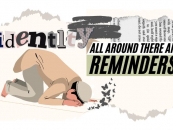-853X543.jpg)
COVID-19: What it means to Business - Part 2
by Alok Jagdhari April 20 2020, 12:41 am Estimated Reading Time: 4 mins, 5 secsIn continuation of a three part series on COVID Survival Guide for businesses, especially small businesses/ startups by Alok Jagdhari
Part 2: Macroeconomics
The Macroeconomics Portion will address the following areas:
- Pandemic Response and Creation of an Economic Depression
- Fiscal Response & Monetary Policy Response
- There will be a “New Normal”
- Financial Markets – 5 Stage Response
Given the Nature of the Pathogen, as discussed in Part 1 yesterday, (COVID-19 What it means to Business Part 1) we are dealing with the Macroeconomics of Social Distancing.
Public Policy Response has been a three-legged Stool
- Social Distancing is a must: Without this the infection will spread out of control. Lock-downs seem to be slowing the spread of the infection and it should continue as long as the medical policy professionals consider it necessary. Relaxing it too soon would turn a disaster into a catastrophe
- Aggressive Testing and Treatment: All medical resources are being poured into discovery and treatment. The testing standards have been led by South Korea, EU (a little late), US (a little late), China (VERY late). Without extensive and on-demand testing, the contagion isn't likely to let up
- However, as a result of the Medical Response to the Pandemic, we have created a Macroeconomic Depression, which requires unprecedented fiscal and monetary response. The US Economy is likely to shrink 20-30% year-on-year between March 2020 and June 2020. US unemployment rate has sky-rocketed to 15% from 3.5% in 4 weeks and will likely to top out at 30% according to Federal Reserve projections
.jpg)
The macroeconomic response world-over has been equivalent of what happened during the Great Depression and WW2. Unprecedented Fiscal Stimulus and Monetary Policy response is needed since the current situation is Spanish Flu and the Depression happening simultaneously.
USA, EU, Japan, China, etc., are all pumping in between 5% to 15% of their GDP as fiscal stimulus. $2.5 Trillion has already been pumped in by the US; add $1 Trillion more is on the cards before the end of the current year. Euro2 Trillion+ from EU Nations, and European Union and $750b from China brings the total to over $6trillion worldwide. Much more will be needed before the end of 2020, which means the Western World will be running fiscal deficits in the region of 15% -20% of the GDP for 2020 and 2021, not seen since WW2.
ECB, BoJ, PBoC, Federal Reserve are providing unprecedented liquidity to banks and reducing rates aggressively and the Federal Reserve Balance sheet is in excess of $5 trillion now. Central Banks are carrying a blank check, do-whatever-it-takes policy mandate and aggressively buying assets, accepting nearly every type of government backed paper as collateral. There is no other option for Governments and Central Banks.
You can’t haggle over the price of water when you and your family are inside a burning house.
The Depression in 1929 changed economic policy forever: Central Banks were set up, Regulators for financial industry and Keynesian Economics became the de-facto policy worldwide. New international institutions and mechanisms emerged. And FDR's New Deal was born - Social Safety nets in the form of social security, unemployment benefits, etc.
Let's be clear - we are never going back to January 2020. Ideas that seemed far-fetched only a few weeks ago are now considered common sense. Universal Healthcare & Universal Basic Income is openly being discussed worldwide. Globalization and Trade could go either way - much closer integration or a sense of global co-existence
OR
Everyone withdraws into his or her own “Fortress”?
The jury is still out on this point.
However, let's remember that someone will have to pay for the Extra-ordinary Policy Response (EPR).
The following scenarios are very likely:
- Much higher Taxes for High Income households
- A global wealth tax
- Higher Corporate Taxes
Truly, we don’t know how and when the nations will exit the extreme macroeconomics being practiced today.
The Financial Markets and Financial Assets have been a very interesting case study.
And I see the following 5 Stages:
Stage 1 – Shock
Just saw a ghost - February and March 2020
Stage 2 – Relief
It’s not a ghost, breath a sigh of relief - Large Fiscal Response, unlimited Liquidity; everything will be back to normal optimism
Stage 3 – Reality
It’s a Serial Killer, coming to terms with the Pathogen - Coming to terms with the new “earnings”, new “sales”
Stage 4 – Acceptance
This isn’t a short-term thing. This is truly an unknown; Things aren’t going back to Normal
Stage 5 – Seeing the “New Normal”
We will go back to a "normal" but no one knows what that will look like right now, let alone when it will happen. We don’t know how the extreme Macro responses will play out in the long term
The only thing that is clear is that we will never go back to the "normal" of January 2020.
Tomorrow - Part 3:
Microeconomics of COVID Pandemic
Stay tuned!




-173X130.jpg)
-173X130.jpg)
-173X130.jpg)
-173X130.jpg)
-173X130.jpg)
-173X130.jpg)
-173X130.jpg)
